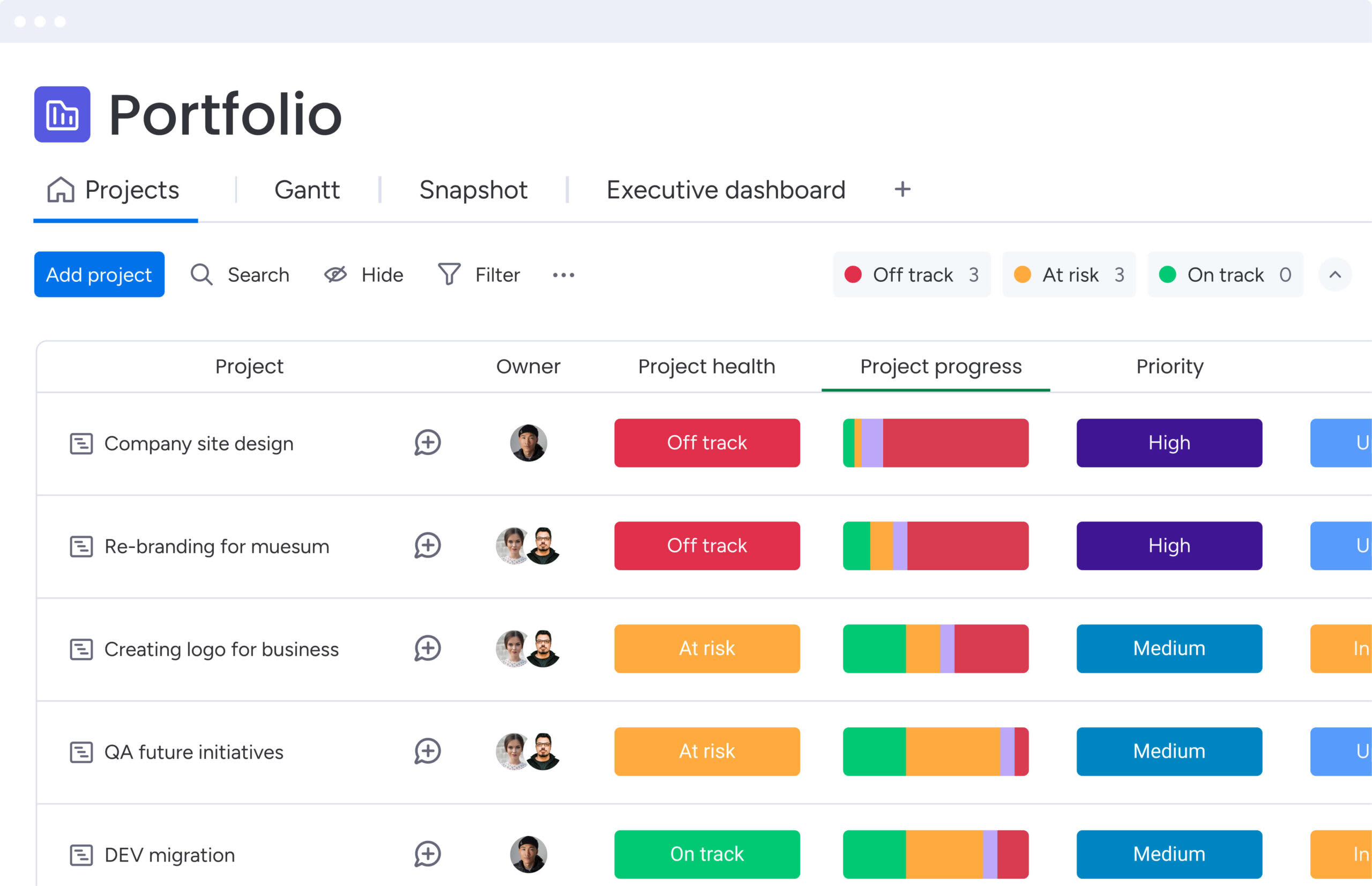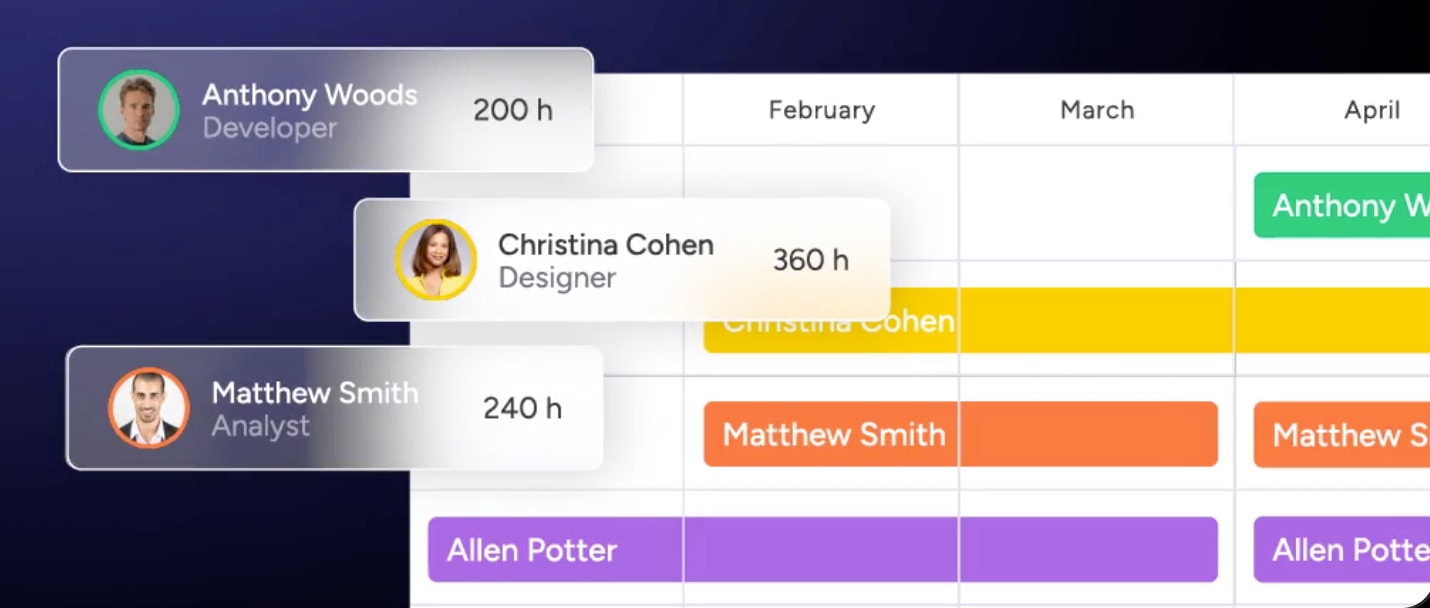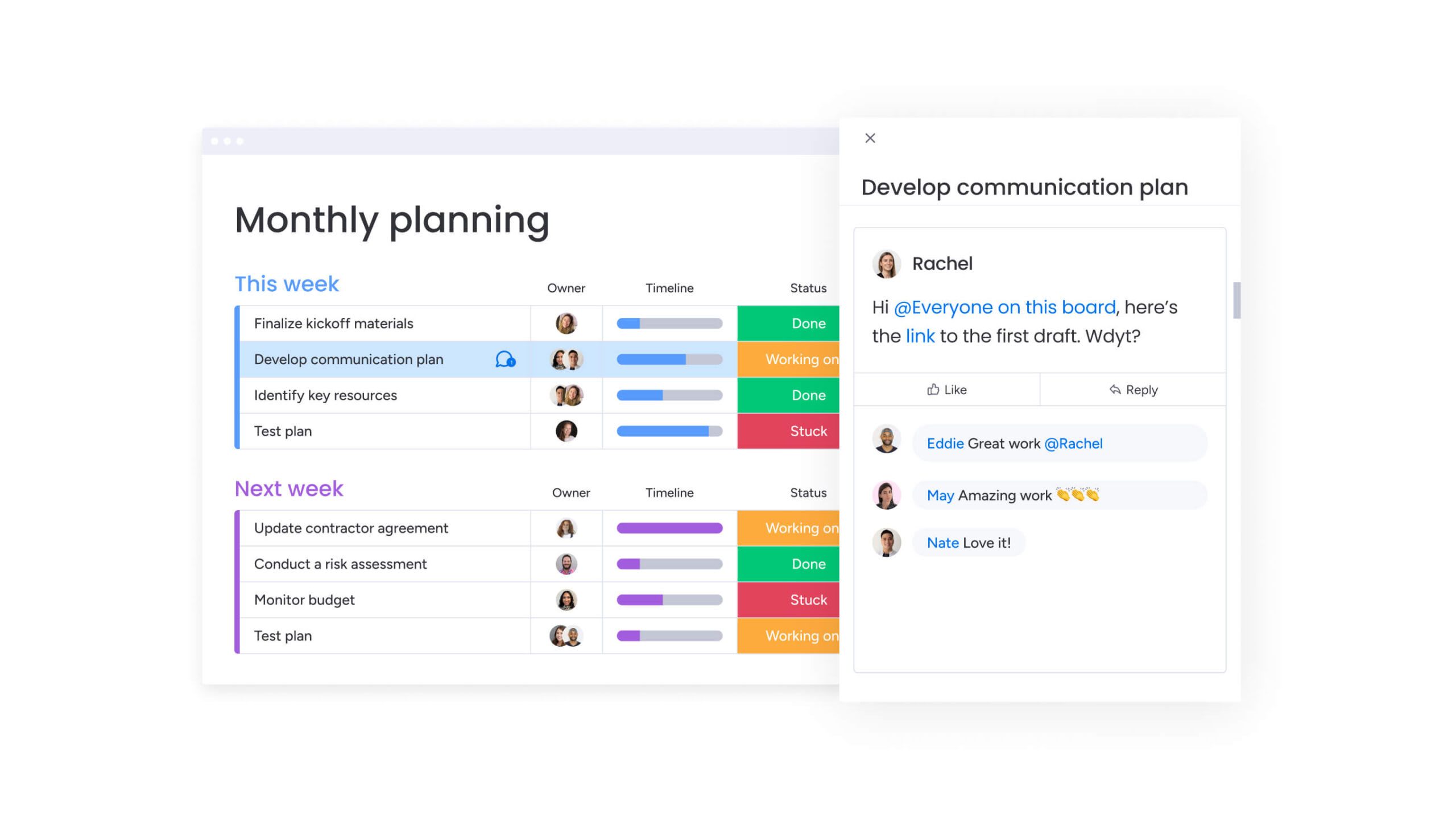As projects scale in complexity, many teams discover that their informal processes can no longer keep up, leading to missed deadlines and budget overruns. This is not a failure of people, but a gap in the system guiding them. The PRINCE2 methodology fills this gap by providing a structured, process-based framework that ensures every project has clear justification, defined roles, and manageable stages.
The approach brings predictability and control to even the most ambitious initiatives. Pairing this robust framework with a flexible platform like monday work management helps teams translate theory into streamlined execution.
This guide walks through everything you need to know about the PRINCE2 methodology. We will cover its seven core principles, themes, and processes, along with the key roles and responsibilities that drive project success. You will also learn how to integrate PRINCE2 with modern platforms and what its advantages are for your organization.
What is PRINCE2 methodology?
PRINCE2 (PRojects IN Controlled Environments) is a structured, process-based project management methodology that provides organizations with a comprehensive framework for managing projects from initiation to closure. What is PRINCE2 methodology specifically designed to do? It emphasizes controlled environments where projects are divided into manageable stages, each with clearly defined roles, responsibilities, and decision points.
Unlike traditional project management approaches that focus primarily on techniques, the prince2 method offers a complete governance framework. The methodology ensures projects remain justified throughout their project lifecycle and delivers products that meet user requirements while staying within budget and timeline constraints.
What is PRINCE2 project management’s greatest strength? Its scalability and adaptability allow organizations to tailor PRINCE2 to fit projects of any size, from small departmental initiatives to large-scale enterprise transformations. This flexibility makes it particularly valuable for organizations managing diverse project portfolios where consistency and control drive success.
7 core principles of prince2
The prince2 principles form the foundation that must be applied to every project using this methodology. These principles ensure projects remain viable, well-managed, and aligned with business objectives throughout their entire lifecycle.
The principles work together to create a robust framework for project governance. They provide guidance on maintaining business justification, learning from experience, and ensuring clear accountability at every level of the project organization.
1. Continued business justification
Every project must have ongoing business value that justifies the investment of time, money, and resources. This principle requires regular assessment of the business case to ensure the project remains worthwhile as circumstances change.
2. Learn from experience
Prince 2 project management emphasizes capturing and applying lessons from previous projects, both successes and opportunities for improvement. Teams document what worked well and what could be enhanced, creating a knowledge base that informs future project decisions.
3. Defined roles and responsibilities
Clear accountability prevents confusion and ensures effective collaboration. Everyone involved must understand their specific role, what’s expected of them, and how their work contributes to project success.
4. Manage by stages
Projects are divided into manageable stages with defined deliverables and decision points. This approach provides greater control and allows for regular assessment of progress against objectives.
5. Manage by exception
Senior management focuses on strategic decisions while project managers handle day-to-day operations within agreed parameters. This reduces unnecessary oversight while maintaining appropriate governance.
6. Focus on products
The PRINCE2 project methodology emphasizes delivering quality products that meet user requirements rather than just completing activities. This product-focused approach ensures projects deliver real value to stakeholders.
7. Tailor to suit the project
The methodology can be adapted to fit different project environments, sizes, and complexities. This flexibility ensures PRINCE2 remains practical and relevant across various industries and organizational contexts.
Modern work management platforms like monday work management support these principles by providing visual workflows that clarify roles, automate stage transitions, and maintain clear documentation of lessons learned across project portfolios.

Themes and key focus areas
PRINCE2 project management methodology overview includes seven themes that are aspects of project management addressed continuously throughout the project lifecycle. These themes provide practical guidance on managing different project elements effectively, ensuring nothing critical falls through the cracks.
The seven themes work together to create comprehensive project oversight. They address the fundamental questions of why projects exist, how they’re organized, what quality standards apply, and how progress is measured and controlled.
Understanding these themes helps project teams maintain focus on the most important aspects of project management:
- Business case: ensures projects remain justified and aligned with organizational objectives throughout their lifecycle
- Organization: Defines project structure, roles, and communication channels to support effective governance
- Quality: Ensures deliverables meet agreed standards and user requirements through systematic quality management
- Plans: Addresses the who, what, when, how, and how much of project work, providing a clear roadmap for execution
- Risk: Provides a systematic approach to identifying, assessing, and managing project uncertainties
- Change: Handles project modifications and unexpected issues in a controlled, documented manner
- Progress: Monitors and controls project performance against plans to ensure objectives are met
These themes integrate seamlessly with modern project management platforms—tools that 82% of employees already rely on to track tasks and collaborate. monday work management’s customizable dashboards and automated workflows help teams track progress across all themes while maintaining the structured approach that the Prince2 methodology requires.
Try monday work management7 processes that define prince2
The prince2 processes define the step-by-step lifecycle of a project from conception to closure. Each process has specific inputs, activities, and outputs that ensure consistent project delivery across the organization.
The processes create a logical flow that guides project teams through critical decision points. They establish when certain activities should occur, who should be involved, and what deliverables must be produced at each stage.
1. Starting up a project
This pre-project process establishes feasibility and sets up the initial project team. Key activities include appointing the project manager, creating the project brief, and determining whether the project is viable enough to proceed to full initiation.
2. Directing a project
The project board provides high-level oversight and makes key decisions throughout the project lifecycle. This process ensures projects remain aligned with business objectives and receive appropriate executive support.
3. Initiating a project
This process creates detailed plans and establishes the foundation before major work begins. Teams develop comprehensive project documentation, including the business case, project plan, and risk register.
4. Controlling a stage
Day-to-day project management activities occur within this process. Project managers assign work packages, monitor progress, handle issues, and ensure stage objectives are met within agreed tolerances.
5. Managing product delivery
This process ensures products are developed and delivered according to specifications. Team managers work with project managers to coordinate work package execution and maintain quality standards.
6. Managing stage boundaries
Teams review completed stages and plan for upcoming ones, including critical decision points for project continuation or adjustment. This process includes updating project documentation and seeking authorization for the next stage.
7. Closing a project
The structured conclusion of projects includes deliverable acceptance, lessons capture, team disbandment, and formal project closure. This ensures knowledge is preserved and resources are properly released.
Organizations using monday work management can map these processes to automated workflows, ensuring consistent execution while maintaining the flexibility to adapt to specific project needs.
Roles and responsibilities in PRINCE2
Project management prince2 defines specific roles to ensure clear accountability and effective decision-making throughout the project lifecycle. These roles can be combined or separated based on project size and organizational structure, but the responsibilities must always be clearly assigned.
The role structure creates a balanced approach to project governance. It separates business interests, user needs, and supplier capabilities while ensuring someone is accountable for every aspect of project success.
Key roles within the PRINCE2 project management framework include:
- Project manager: Responsible for day-to-day project management and delivery, ensuring work packages are completed on time and within quality standards
- Executive: Owns the business case and makes funding decisions, representing the organization’s investment in the project
- Senior user: Represents those who will use the project outputs, ensuring deliverables meet actual user needs
- Senior supplier: Provides expertise and resources for product delivery, representing the technical and specialist capabilities
- Project board: Collective decision-making body comprising executive, senior user, and senior supplier roles
- Team manager: Manages specialist teams and work packages, reporting progress to the project manager
- Project assurance: Ensures project viability and quality on behalf of the project board
- Project support: Provides administrative assistance and specialist support services
Modern platforms like monday work management help clarify these roles through visual org charts, automated notifications, and clear task assignments that ensure everyone understands their responsibilities and can track their contributions to project success.
Try monday work managementIntegrating PRINCE2 with modern platforms and AI
The prince two project management methodology’s structured approach aligns naturally with modern work management platforms that provide visibility, automation, and collaboration capabilities. The methodology’s emphasis on defined processes and clear documentation makes it ideal for digital transformation initiatives.
Contemporary project management platforms enhance how to use PRINCE2 by automating routine tasks and providing real-time insights. This combination allows teams to focus on strategic decision-making while maintaining the rigorous controls that PRINCE2 requires.
Key integration opportunities demonstrate the power of combining structured methodology with modern technology:
- Visual project tracking: Dashboards and boards support PRINCE2’s stage-based approach, making progress easy to monitor across multiple projects simultaneously
- Automated workflows: Automation streamlines prince2 processes and reduces manual work, such as stage gate approvals and progress notifications
- Real-time collaboration: Modern platforms facilitate the communication required by PRINCE2 roles, ensuring stakeholders stay informed and engaged — a critical capability when 90% of project management effort is communication.
- AI-powered insights: Artificial intelligence enhances risk management and progress monitoring by identifying trends, flagging potential opportunities, and suggesting corrective actions—part of the reason 86% of IT professionals already leverage AI in their daily work.
monday work management’s AI blocks can automatically update risk registers, generate progress reports, and alert teams to potential opportunities for improvement. These capabilities support PRINCE2’s emphasis on proactive management while reducing the time spent on routine administrative tasks.
The platform’s Digital Workers can monitor project health across multiple initiatives, providing executives with the high-level insights they need for effective project governance without overwhelming project managers with reporting requirements.

Certification path foundation to practitioner
The prince2 certification overview provides a clear progression path for project management professionals. Certification validates understanding of the methodology and demonstrates commitment to structured project management approaches.
The two-tier certification system ensures professionals have both theoretical knowledge and practical application skills. This approach helps organizations build internal capability while maintaining consistency in project delivery approaches.
Certification levels include structured learning paths that build expertise progressively:
- Prince2 foundation project management: Covers basic concepts, terminology, and principles of PRINCE2, providing the knowledge needed to work effectively on PRINCE2 projects
- Prince2 project management practitioner: Focuses on practical application and tailoring of PRINCE2 to specific organizational contexts (requires Foundation certification first)
- Agile extension: PRINCE2 Agile combines PRINCE2 governance with agile delivery approaches for hybrid project environments
- Continuing professional development: Ongoing learning requirements help maintain certification currency and keep skills relevant
Organizations investing in PRINCE2 certification often see improved project success rates and more consistent delivery approaches. The structured learning path helps teams understand not just what to do, but why specific practices matter for project success.
Professional certification also enhances career prospects, as the prince2 certified project manager credential is widely recognized across industries and geographic regions, making it valuable for professionals working in global organizations or seeking international opportunities.
Advantages of PRINCE2 project management
Prince2 it project management offers significant advantages for organizations seeking to improve project success rates and establish consistent delivery approaches—an important benefit when around two thirds of projects globally are reported to fail. The methodology’s structured framework addresses common project challenges while providing flexibility for different organizational contexts.
The benefits extend beyond individual project success to organizational capability building. PRINCE2 helps create a common language and approach that improves collaboration across departments and project teams.
Key advantages demonstrate why organizations choose this methodology for project success:
- Standardized approach: Ensures consistent project delivery across the organization, reducing variability in outcomes and making it easier to share resources between projects
- Risk mitigation: Structured risk management processes identify and address opportunities proactively, turning potential challenges into strategic advantages
- Stakeholder alignment: Clear roles and regular communication ensure everyone understands their responsibilities and project expectations
- Scalable framework: Applicable to projects of any size or complexity, from small departmental initiatives to large enterprise transformations
- Global recognition: Widely accepted methodology facilitates collaboration across borders and industries, making it easier to work with external partners
- Continuous improvement: Built-in learning mechanisms help enhance future projects and build organizational project management maturity
Organizations using monday work management to support PRINCE2 implementation often see additional benefits from improved visibility and automated reporting. The platform’s flexibility allows teams to maintain PRINCE2’s structured approach while adapting to specific organizational needs and preferences.
How can your organization begin implementing these advantages in your current project environment?
Try monday work managementMoving forward with prince2 in your organization
Implementing the methodology for project management successfully requires careful planning and organizational commitment. The methodology works best when leadership supports the structured approach and teams receive proper training and prince2 software to execute effectively.

Organizations should start with a pilot project to test PRINCE2 processes and identify areas where the methodology needs tailoring for their specific context. This approach allows teams to learn and adapt before rolling out PRINCE2 across larger project portfolios.
Consider these practical next steps for successful implementation:
- Assess organizational readiness: Evaluate current project management maturity and identify opportunities that PRINCE2 can address
- Identify training requirements: Determine which team members need Foundation or Practitioner certification to support implementation
- Select a pilot project: Choose a project with appropriate scope and stakeholder support to test PRINCE2 processes
- Choose supporting technology: Select a platform that can support PRINCE2 processes while providing the flexibility your organization needs
monday work management offers the customizable workflows, automated processes, and AI capabilities needed to support successful PRINCE2 implementation. The platform helps organizations maintain the structured approach that PRINCE2 requires while providing the modern collaboration and visibility features that today’s teams expect.
The combination of PRINCE2’s proven methodology with monday work management’s flexible platform creates a powerful foundation for project success, helping your organization achieve greater control, predictability, and strategic impact from your project investments.
FAQs about prince2 methodology
What are the 7 processes of prince2 methodology?
The 7 processes of PRINCE2 methodology are: Starting up a project, Directing a project, Initiating a project, Controlling a stage, Managing product delivery, Managing stage boundaries, and Closing a project.
Is prince2 methodology recognized in the United States?
PRINCE2 methodology is recognized in the United States, though PMP certifications are more popular in North America, while PRINCE2 certifications are more widely adopted in Europe, Australia, and the United Kingdom.
How does prince2 methodology differ from agile project management?
PRINCE2 methodology differs from agile project management as it is a process-based approach suited for larger projects with structured roles and deliverables, while agile is a people-centric approach more suited for smaller, iterative projects.
Is prince2 methodology easier to learn than PMP certification?
PRINCE2 methodology is easier to learn than PMP certification because PRINCE2 is more prescriptive and simpler to understand and implement, while PMP covers a wider range of project management knowledge requiring deeper understanding.
What industries benefit most from prince2 project management methodology?
Industries that benefit most from PRINCE2 project management methodology include government, healthcare, IT, construction, and financial services where structured governance, compliance requirements, and stakeholder accountability are essential.
How long does prince2 certification training typically require?
PRINCE2 certification training typically requires 2-3 days for Foundation level certification, with an additional 2-3 days of advanced training needed for Practitioner certification focused on practical application.

